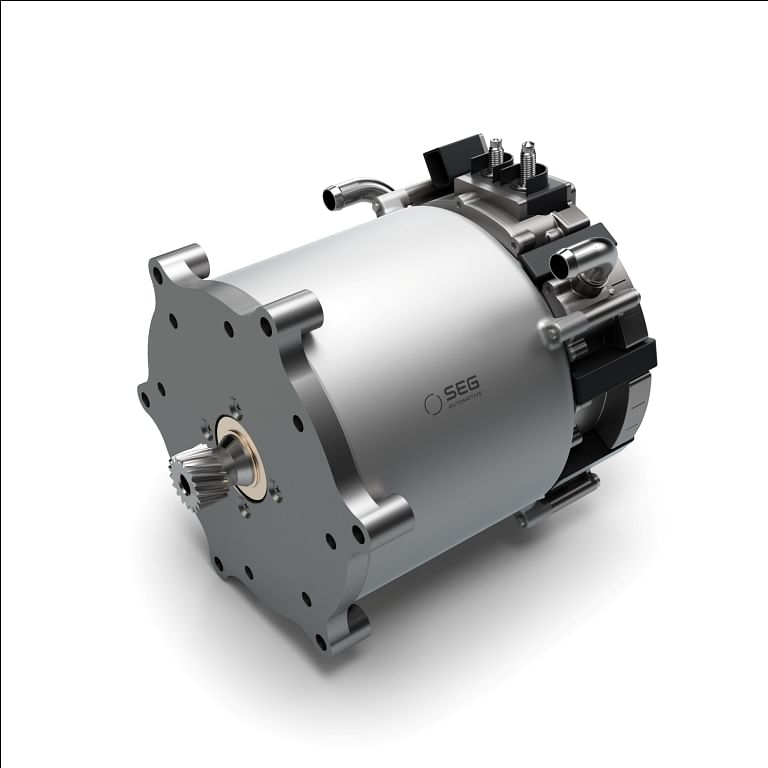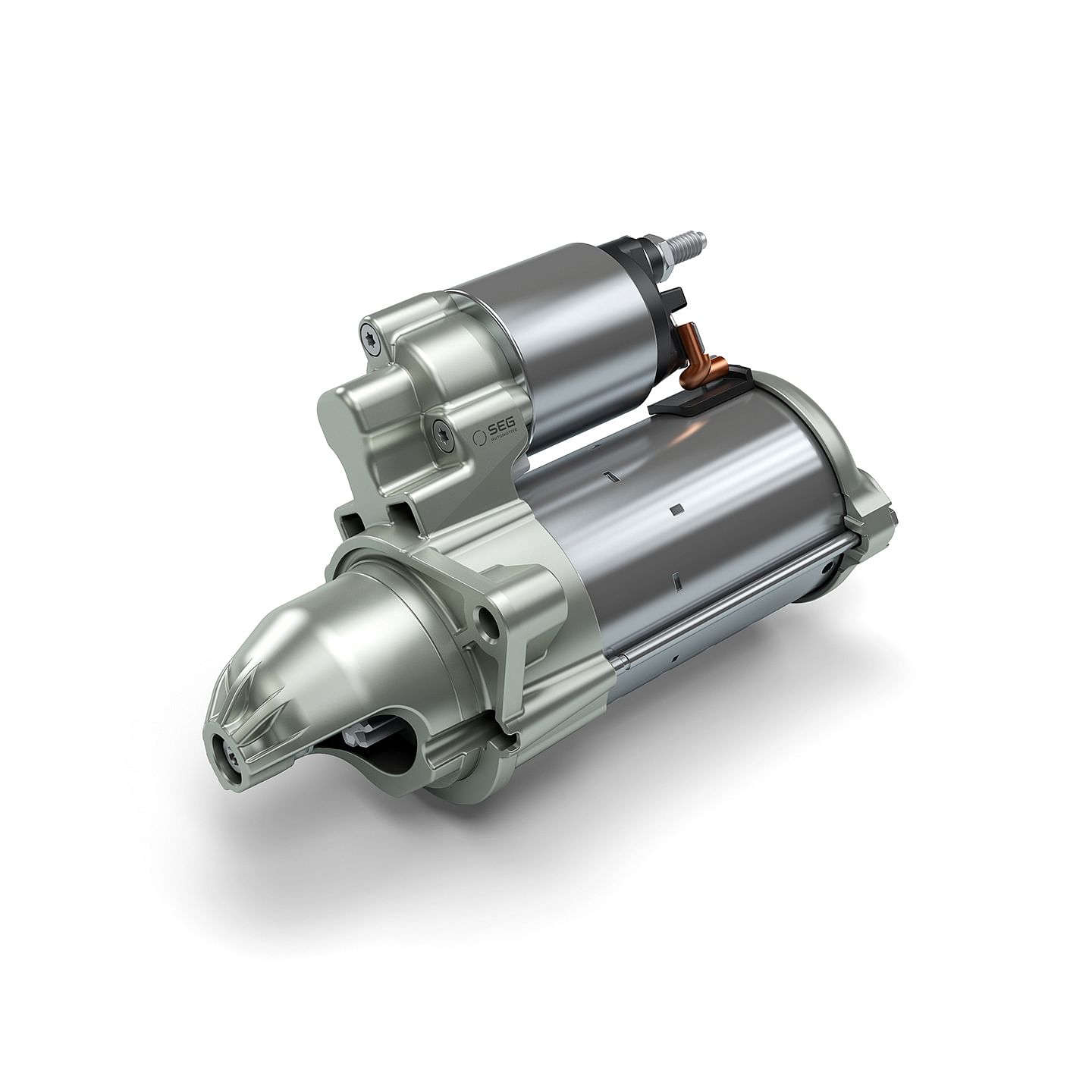SEG Automotive to reveal new products for 48V hybrids and EVs at IAA 2019
The company will showcase new products for 48V hybridisation and electrification. In addition the it has updated its' Whitepaper 'Transformation of the Powertrain', which details how to reduce CO2 emissions from passenger cars at present and also in the mid-term.
Automotive component supplier SEG Automotive has announced that it will showcase its latest solutions for the automotive industry at next month's IAA 2019. These new products will enable OEMs make the transition towards more efficient combustion engines, 48V hybrids and electrification.
SEG says one of the example is the new EM 1.25 e-machine, which offers increased fuel efficiency and provides sufficient power for comprehensive e-driving functionality, enabling 48V full-hybrids or even compact 48V electric cars.
New products for 48V hybridisation
The company says at a global scale, no single powertrain solution is universally the best for all applications – both in terms of emissions and available infrastructure. However, 48V hybridisation has emerged as a cost-effective, easy-to-integrate solution to make an immediate impact to reach climate goals and meet CO2 legislation targets. SEG Automotive predicts that by 2025, one in five new cars globally will come equipped with 48V technology; in China (31% market share) and Europe (35% market share) it will be roughly every third vehicle.
The company says it has been a leader for this technology, and its Boost Recuperation Machine (BRM) is the only 48V machine recognised as an eco-innovation by the EU and granting up to 1.8g/km of additional CO2 credits. It replaces the conventional generator in its position on the belt to turn combustion engines into mild hybrids, significantly reducing fuel consumption and CO2 emissions. The BRM also serves as the sole engine for light electric vehicles like the Schwalbe e-scooter.
At IAA 2019, the global supplier will showcase the next generation of 48V products, which anticipate the growing demands of the automotive industry: a substantial upgrade of the BRM and the new EM 1.25 product range, which offers even greater savings and with 25 kW enables comprehensive 48V e-driving functionality – from mild-hybrids to compact 48V electric cars.
Hybrid cooling for even higher power density
The second generation of the Boost Recuperation Machine builds on the strengths of its predecessor – easy integration and low system costs. At the same time, the BRM 2.8 ramps up all performance indicators: higher starting torque, boost power and continuous power are enabled by a compact design with impressive power density and efficiency. The enhanced recuperation peak power of 15 kW further increases the CO2 and fuel saving potential – reducing consumption by up to 8 percent even compared to start/stop systems.
“The new BRM 2.8 is an incredibly cost-efficient product with an immediate impact towards climate protection goals and achieving fleet emission targets, making it the ideal short- and mid-term solution for the needs of OEMs across the world,” said Anil Kumar M R, managing director, SEG Automotive India.
48V full hybrid
The company says the new EM 1.25 (pictured below) takes the concept of 48V to a new level. The highly efficient 25 kW e-machine can be integrated flexibly throughout the powertrain - from the gearbox (P2, P3) to the rear-axle (P4), depending on the architecture preferred by the specific customer. Even compared to cars equipped with start/stop, it provides additional fuel consumption and CO2 emission savings of up to 19 percent under real-life conditions.

The flexibility of the EM 1.25 does not stop at mild-hybridisation, however: it provides enough power to enable 48V full-hybrids or even compact 48V electric vehicles – for example by placing two EM 1.25 on the rear axle. This solution would incur lower costs than current high voltage systems, which require a special safety architecture.
“48V-powered vehicles will be a key contributor to drastically reducing global CO2 emissions from cars. With our EM 1.25 we have an efficient solution for a wide range of use cases, from mild hybrid to small EVs, for example for urban applications. Driven by our passion for innovation we will continue along this path. The EM 1.25 constitutes the basis for our continued research of and investment in high voltage solutions,” said Kumar M R.
Additional key benefits of SEG Automotive’s new electrical machine are its smoothness and very high efficiency. Powered by a reliable 6-phase PMSM (permanent magnet synchronous machine), the EM 1.25 is characterized by reduced vibrations and noise as well as lower losses compared to conventional 3-phase PMSMs.
Transformation of the powertrain
EVs promise a future of driving without emissions. SEG says however, their impact is currently limited by reluctant consumers, necessary breakthroughs in battery technology and a global energy mix, which even in 2040 will still be dominated by fossil fuels. In fact, even in the mid-term electric cars can be a net negative for the climate in major markets like India, China or the US, as SEG Automotive’s Whitepaper “The Transformation of the Powertrain” showed through a comprehensive analysis of independent sources.
Since its first release in September 2018, trade wars and an economic downturn have slowed down growth in the automotive industry. Policy changes have been implemented across the world – from much stricter CO2 fleet consumption targets in the EU to reduced subsidies for new energy vehicles in China. EV sales have increased rapidly to over 1.2 million new cars (+74% YoY), but independent projections for future growth have actually been lowered: it is now expected that EVs will achieve only between seven to 14 percent global market share by 2025.
The comprehensive 2019 update of the whitepaper puts these changes into context, adds two more region profiles for the key markets Japan and Brazil and provides background information on additional topics like the fuel cell or the viability of alternative fuels.
Cost-efficient solutions to reduce significant emissions from ICE
According to current market forecasts, the combustion engine will remain a pillar of individual mobility in the mid-term. “Even in 2025, at least 85 percent of new passenger cars will still be equipped with a diesel or gasoline engine. For conventional combustion engines, start/stop and high-efficiency generators can bring down fuel consumption and emissions by around 10 percent at a very low cost,” explained Kumar M R.

SEG Automotive will showcase two of these cost-effective solutions at IAA 2019 —the SC70 (pictured above) a compact, powerful start/stop starter motor (up to 1.7 kW) for small to mid-sized cars, which can be customised to the needs of the specific application with additional features like load dampening and noise reduction. And, the PL7Q generator which introduces recuperation of braking energy to 12V combustion engines. It is an ultra-quiet, robust and scalable solution for medium to high energy requirements and car manufacturers can receive up to 1.8g/km of additional CO2 credits for applying this eco-innovation.
RELATED ARTICLES
Skoda begins sale of made-in-India CKD Kushaq in Vietnam
Before production started, pre-series Kushaq vehicles covered over 330,000 kilometres on a variety of Vietnamese roads a...
Six Japanese companies join forces to expand use of recycled materials in new vehicles
Denso, Toray Industries, Nomura Research Institute, Honda Motor, Matec Inc and Rever Corporation have set up the BlueReb...
BYD selects Voestalpine as steel supplier for its Hungarian plant
The announcement of the Austrian steelmaker as a supplier demonstrates BYD’s strategic plan to source from high-quality,...





 By Autocar Professional Bureau
By Autocar Professional Bureau
 27 Aug 2019
27 Aug 2019
 20441 Views
20441 Views














